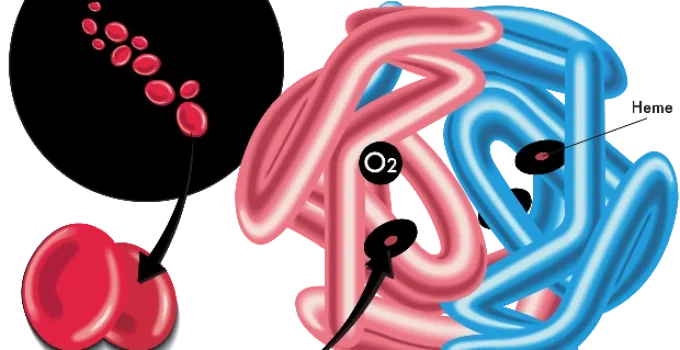Why Is Blood Red?
You’ve probably seen your own blood before—maybe from a scraped knee or a paper cut—and you know it’s red. But have you ever wondered why it’s that color? And what would happen if it weren’t red?
In this article, we’ll explore the science behind why blood is red, what it’s made of, and how it changes color depending on what it’s carrying. You’ll also learn some cool facts about blood in humans—and other animals too!
🔍Dive Deeper
- What Is Blood Made Of?
- The Role of Red Blood Cells
- Why Is Blood Red?
- What About Blue Blood in Veins?
- Do Other Animals Have Red Blood?
- Table: Blood Colors in the Animal Kingdom
- 🎯 Final Thoughts
- 📚 References
What Is Blood Made Of?
Blood isn’t just a red liquid—it’s actually made up of four main parts:
- Red blood cells – carry oxygen
- White blood cells – fight infection
- Platelets – help with clotting
- Plasma – the yellowish liquid part that carries nutrients and waste
Plasma makes up about 55% of your blood, while red blood cells are the main reason blood looks red.
The Role of Red Blood Cells
Red blood cells are tiny, round, and shaped like little donuts without holes. They’re packed with a special protein called hemoglobin.
Hemoglobin has a super important job:
🧪 It grabs onto oxygen in your lungs and carries it to the rest of your body.
But that’s not all—hemoglobin also contains iron, and that’s where things get colorful.
Why Is Blood Red?
The reason blood is red comes down to chemistry.
Hemoglobin contains iron, which binds with oxygen. When iron and oxygen combine, they form a reddish molecule—kind of like rust on metal.
- When blood is full of oxygen, it appears bright red.
- When blood is low on oxygen, it looks darker red, sometimes almost purple.
So no matter what, blood is always some shade of red—it just depends on how much oxygen it’s carrying.
💡 Cool Fact: Just one drop of blood contains about 250 million red blood cells, all carrying oxygen to your body’s cells!
What About Blue Blood in Veins?
You might’ve noticed that the veins on your wrist or arm look blue. But that doesn’t mean your blood is blue!
🧠 Here’s the truth:
- The veins look blue because of how light travels through your skin.
- Blood is never actually blue—even when it has less oxygen, it’s still dark red.
This is a common myth, but science clears it up: veins appear blue due to light and reflection—not because of the actual color of the blood inside them.
Do Other Animals Have Red Blood?
Not all animals have red blood. While humans and most mammals do, some animals have blood in very different colors!
Here are a few examples:
| Animal Group | Blood Color | Why? |
|---|---|---|
| Humans and mammals | Red | Hemoglobin with iron |
| Octopuses and squid | Blue | Hemocyanin with copper, not iron |
| Some worms and leeches | Green | Chlorocruorin (iron-based, but different) |
| Sea cucumbers | Yellow | Rare proteins with vanadium |
🌈 The color of blood depends on the molecules that carry oxygen and what type of metal they use—iron, copper, or something else.
Table: Blood Colors in the Animal Kingdom
| Species | Blood Color | Oxygen Carrier | Metal in Molecule |
|---|---|---|---|
| Humans | Red | Hemoglobin | Iron |
| Octopus | Blue | Hemocyanin | Copper |
| Earthworm | Green | Chlorocruorin | Iron |
| Sea cucumber | Yellow | Vanadium proteins | Vanadium |
| Icefish (Antarctica) | Clear/White | No hemoglobin | None |
🎯 Final Thoughts
So, why is blood red? Blood is red because of hemoglobin, the iron-rich protein that carries oxygen in your red blood cells. When oxygen binds to the iron in hemoglobin, it creates that bright red color we see when we get a cut.
Even though veins might look blue, and some animals have blue, green, or even yellow blood, human blood is always red—either bright or dark depending on how much oxygen it’s carrying.
The next time you see a little blood, you’ll know you’re looking at one of the body’s most important chemical reactions in action!
📚 References
- American Chemical Society. “Why Is Blood Red?”
- KidsHealth. “What’s in Blood?”
- National Institutes of Health. “Understanding Blood.”
- LiveScience. “Why Is My Blood Red?”
- Science Focus. “Do Any Animals Have Blue or Green Blood?”
📌Learn More About the Cardiovascular System
- What Is the Cardiovascular System and Why Do We Need It?
- What Are the Parts of the Cardiovascular System?
- How Does the Heart Pump Blood?
- What Are Arteries and Veins, and How Are They Different?
- Why Is Blood Red?
